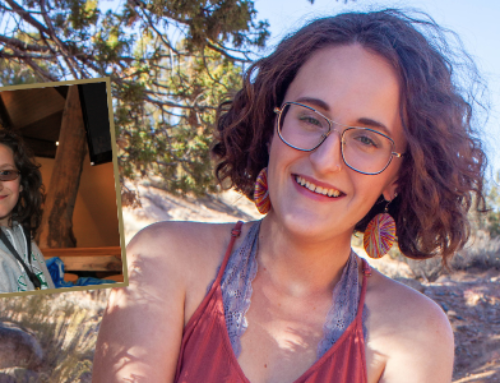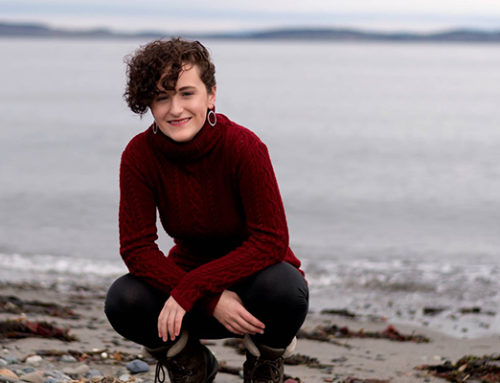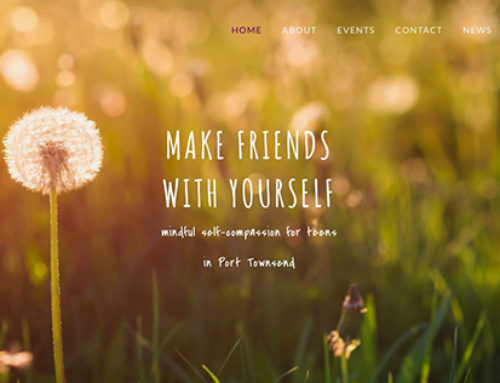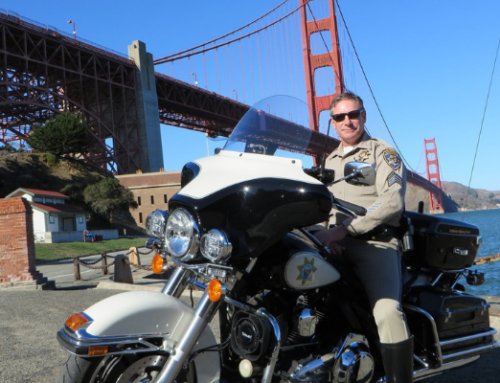I don’t remember how long it was after my suicide attempt that I knew I wanted to live. It wasn’t immediate, I know that. I didn’t wake up in the intensive care unit, fill my lungs with oxygen from a plastic tube and think, “Thank God I’m alive.” What came to me first was that I didn’t want to die. And as a person who has lived nearly 20 years of struggling with suicidal thoughts, I can tell you that there is a very big difference between not wanting to die and wanting to live.
Until my attempt at age 20, not wanting to die was how I lived most of my life. I hovered just above the bottom, inches away from my breaking point and buried beneath mountains of bad memories, mental disorders and hopelessness. I was always just one step away from suicide but not really wanting to die. That certainly didn’t mean that I was safe from suicide. It just meant that I was able to keep my suicidal thoughts at bay, even if it was a constant struggle. But knowing that I didn’t want to die seemed to suffice for everyone around me: my parents, friends and doctors, even me. When asked if I were considering suicide, I could almost always answer a truthful, “No, I don’t want to die.” This became the way I learned to cope with suicide: one step from the edge, buried in hopelessness, alive but definitely not living.
My first memory of this is when I was 8 years old and held a chef’s knife in my hand while crying uncontrollably. I was home from school alone one afternoon and doing the dishes as part of my daily chores. It wasn’t often that I had the house to myself, and I couldn’t help but notice how quiet it was. The TV was off. There were no sounds of nightly news reporters filling me in on the latest world tragedies. My mother and stepfather were not home yet. There were no voices shouting back and forth at each other, venting the dramas of the work day. It was just me, the sound of my breathing, the occasional drip of the faucet and the muffled clank of dishes sliding beneath soapy water.
I was drying the dishes and putting them in the rack when I picked up the knife. My mother had warned me about how easily I could get hurt if I mishandled it. Sometimes I was afraid to even touch it, but on that day I wasn’t so scared. I held it by the handle in a firm grip and slid a kitchen towel down one side of the blade. I could see my face in the reflective shine. I could see my teeth, and the big space between them that I wished I didn’t have. I could see the cowlick in my light blonde hair that made me look messy, no matter what I did to hide it. I could see my skin, my nose and my eyes. I could see their sadness and their weakness. Tears began to form.
At 8 years old, I hated my life. I hated that I was being molested and I had no one to tell. I hated that I was bullied for being a messy kid with a cowlick and crooked teeth, teased for being a bad student and disliked simply because I was me. I hated the thought of waking up each morning scared of what the day would bring. I hated the knot in my stomach that always seemed to be alive within me. I hated that I had trouble controlling my thoughts. I hated that I felt so weak inside and so sad. And for all of that, I hated myself.
My reflection blurred as tears continued to well up in my eyes. I turned and leaned against the counter. I gripped the knife with both hands and imagined what it would be like to not have to wake up again, to not have to face another day. The crying turned to sobs. I breathed deep with heavy wails. I was so broken, and so alone. Slowly, I slid down the kitchen cabinet. I wished I was strong. I wished I was brave. I wished I didn’t live in my house or go to my school. I wished everything was different.
I lay the knife down beside me, curled into a ball on the kitchen floor and sobbed for what felt like hours. The house remained silent. No slamming doors or heavy footsteps. It was just me, an 8-year-old boy lying broken on the floor, curled in a ball with my cheek pressed in a puddle of tears, quietly wishing I wasn’t alive, but somehow not wanting to die.
For years this is where I remained. As a teenager, I was committed to several mental health facilities for treatment. I was consumed by depression, obsessive compulsive disorder and relentless anxiety. Each time I met with a therapist or hospital clinician, they would always ask me the same clipboard questions and would inevitably ask if I was suicidal. That question was always there, probing my darkest desires and gauging the criticality of my current state: “Do you feel like you want to die? Do you want to hurt yourself? Are you thinking of suicide?” But strangely, for all of the times I was asked that, for all the doctors, therapists and counselors I sat with over the years, not once was I asked if I wanted to live.
It wasn’t until my suicide attempt at age 20 when I asked this for myself. I lay in the intensive care unit, tubes running from my mouth and nose, wires hooked up all over my body, and my hands and feet restrained to the bed. I thought about my life. I thought about how I had lived it, or rather how I hadn’t lived it. I looked back at all the significant moments that shaped me, all the things I had been through. And I remembered the quiet afternoon when I lay alone on the kitchen floor as an 8-year-old boy. I realized it had been more than a decade since that day, and for more than a decade I had allowed myself to remain there. All because “not wanting to die” was a good enough place to be.
Over time, I didn’t just “not want to die,” I wanted to live. But a thought like that doesn’t come so easily after years of struggling with suicide. The reality was, I wanted to want to live. Although I’d love to say that I was grateful to be alive and ready to start over, diving headfirst into everything life has to offer, the thought of living life was completely terrifying to me. Living in my shadow was all I had ever known. Living in the darkness of my illnesses, no matter how devastating and dangerous, no matter how isolating, was the only place I knew. I had never known what it was like to get up off the kitchen floor. But I did know then that I was ready to.
For all the difficulties I have had in life, I can tell you that making the decision to say, “I want to live” instead of saying “I don’t want to die,” was one of the hardest things I have ever done. It was facing a fear like none before, a step taken into an unknown world, a step forward into me. But fear, no matter what form it took, was something I had lived with my entire life. It influenced my decisions and kept my head pushed below the surface. Fear, in a large sense, was the reason I attempted suicide. So what was I so afraid of now? I had made a conscious decision to end my life. No matter what answers I gave to the questions of “what if,” none were as devastating or as frightening as what I had just gone through. The truth is that it couldn’t get any worse than it had already been, and my fears were weightless, empty and void of truth. I had nothing to be afraid of.
I’m not sure how long it was after my suicide attempt when I was certain that I wanted to live, when I knew I was ready to pick myself up off that kitchen floor. I’m not sure how long it took for me to truly convince myself that living was what I wanted. It didn’t come immediately. Living life took time. It took work and acceptance. It took a full understanding of what life means to me personally and how I would choose to live it.
As someone who has spent almost 20 years of life battling with suicidal thoughts, I can tell you that there is a very big difference between “not wanting to die” and “wanting to live.” One will leave us where we fall, letting us believe that we are safe and disguising us from our true potential. The other will help us up, dust us off, embrace us for our efforts and present a world which we’ve never imagined, a world worth living for.






